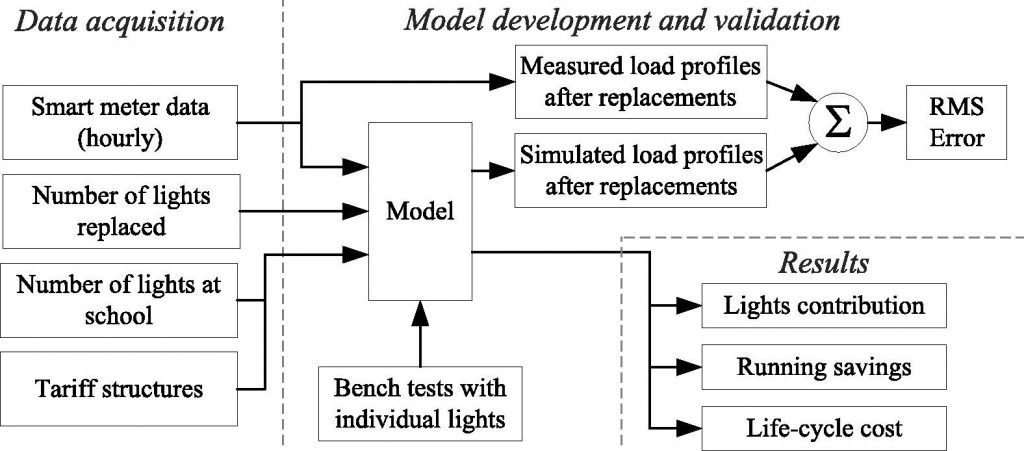South Africa’s private sector is under significant pressure to become energy efficient and employ sustainability principles. In this regard, it has long been implementing energy-saving mechanisms. Unfortunately, there seems to exist many misplaced incentives in South Africa’s public sector that prevent it from embracing energy-efficient technology. The 23 471 public schools in South Africa use an estimated 3.5 TWh energy per year: this results in an annual electricity expense of about ZAR 5.0 billion (ca. US$ 330 million). With the country’s electricity utility in a crisis, tariff hikes are inevitable and inflation-beating. From 2008 to 2018 the increase in cost was 446%. Stellenbosch University researchers, Professor Thinus Booysen of the Department of Electrical and Electronic Engineering, Professor Saartjie Grobbelaar of the Department of Industrial Engineering and current PhD student and Managing Director of GreenX, Jason Samuels, are researching methods for schools to reduce their consumption and systems to manage the school more efficiently.
Background
With the falling cost of LED lighting and the rising cost of electricity, however, conversions are increasingly cost-efficient. Effecting these changes are increasingly urgent given the national utility-imposed rolling blackouts and climate change concerns. The primary education sector, as mentioned above, is a particularly attractive test case since the money saved on utilities can be allocated to desperately needed value-adding services in schools.
The proposed solution
From a technical perspective, however, the cost-benefit of replacements and the range of options facing decision-makers could be overwhelming. To assess the impact of replacing fluorescent lights with LED lights at schools in South Africa, the researchers propose a model that draws on smart metering data, a bench-test assessment of available LED lights and tariff rates. The model was validated with field tests at three schools and used to assess the impact at seven local schools.

The results
The results show that the setup cost differs substantially from the life-cycle cost and that buying the cheapest lights could prove to be the costliest decision over the light’s life cycle. The results also show that lights contribute from 31% to 57% of electricity expenditure and that monetary savings of 21% to 39% are achievable by replacing fluorescent tubes with the most efficient LED lighting option available.
Read the complete research paper: M.J. Booysen, J.A. Samuels, S.S. Grobbelaar (2021). LED there be light: The impact of replacing lights at schools in South Africa, Energy and Buildings, 235, 1-11.





